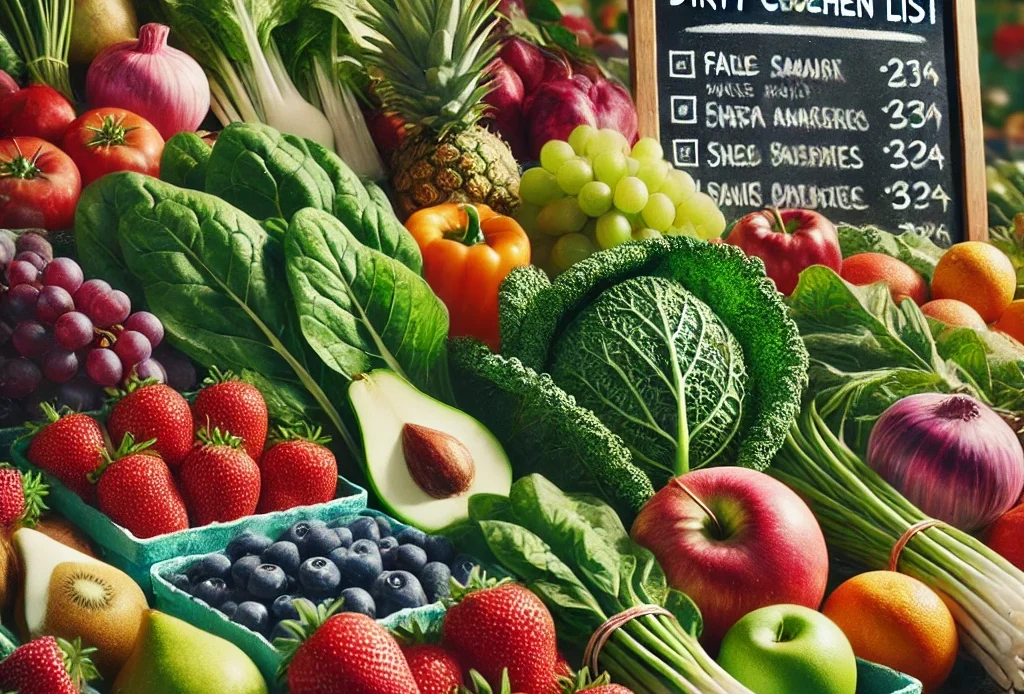The Environmental Working Group (EWG) has released its much-anticipated 2024 Dirty Dozen list, highlighting the fruits and vegetables most contaminated with pesticides. If you’re concerned about the chemicals lurking in your produce, this list is a critical guide for making informed choices in the grocery store. From strawberries to spinach, some popular items may be exposing you to harmful pesticides even after thorough washing.
What is the Dirty Dozen List?
Each year, EWG compiles its Dirty Dozen list based on extensive testing of fruits and vegetables conducted by the U.S. Department of Agriculture (USDA) and the Food and Drug Administration (FDA). In 2024, the USDA and FDA tested over 47,000 samples across 46 different types of produce, revealing the alarming reality: many of our favorite healthy foods are loaded with pesticides. Specifically, traces of 254 different chemicals were found in these samples, with 209 of them detected on items included in the Dirty Dozen list.
The 2024 Dirty Dozen:
Here are the top 12 fruits and vegetables with the highest pesticide residues, even after cleaning:
1. Strawberries
2. Spinach
3. Kale, Collards, Mustard Greens
4. Grapes
5. Peaches
6. Pears
7. Nectarines
8. Apples
9. Bell and Hot Peppers
10. Cherries
11. Blueberries
12. Green Beans
Strawberries, once again, top the list, with pesticide levels that continue to worry health experts. Leafy greens like spinach and kale, notorious for harboring pesticides, remain in the top three. Even after washing and peeling, these items still retain enough pesticide residues to make them some of the most dangerous in your diet.
Why Does It Matter?
According to the EWG, many of the pesticides detected have been linked to serious health risks, including hormone disruption, reproductive damage, and developmental issues in children. For example, fungicides, a common pesticide on many fruits, may interfere with human hormone systems, potentially causing long-term damage. This is particularly concerning for vulnerable populations such as children and pregnant women.
What Should You Do?
The Dirty Dozen list serves as a guide to help consumers prioritize which fruits and vegetables to buy organic. By opting for organic versions of these high-pesticide items, you can significantly reduce your exposure to harmful chemicals. The EWG also provides a Clean 15 list, showcasing produce with the lowest pesticide levels, such as avocados and sweet corn, which you can buy conventionally without as much risk.
Conclusion:
If you’re looking to make smarter, healthier choices at the grocery store, consider investing in organic versions of the items on the Dirty Dozen list. With growing evidence linking pesticide exposure to serious health concerns, it’s worth paying attention to which fruits and vegetables are most likely to be contaminated. Remember, eating more organic produce may come with a higher price tag, but the benefits to your health could be priceless.
Source: This article is based on information from Organic Authority and MindBodyGreen.
Key Highlights:
- EWG’s 2024 Dirty Dozen list reveals the most pesticide-contaminated fruits and vegetables.
- Strawberries, spinach, and kale rank at the top, containing the highest pesticide residues.
- Pesticides detected include fungicides that may disrupt hormone systems and pose health risks.
- The Clean 15 list offers safer alternatives with minimal pesticide contamination, like avocados and sweet corn.




